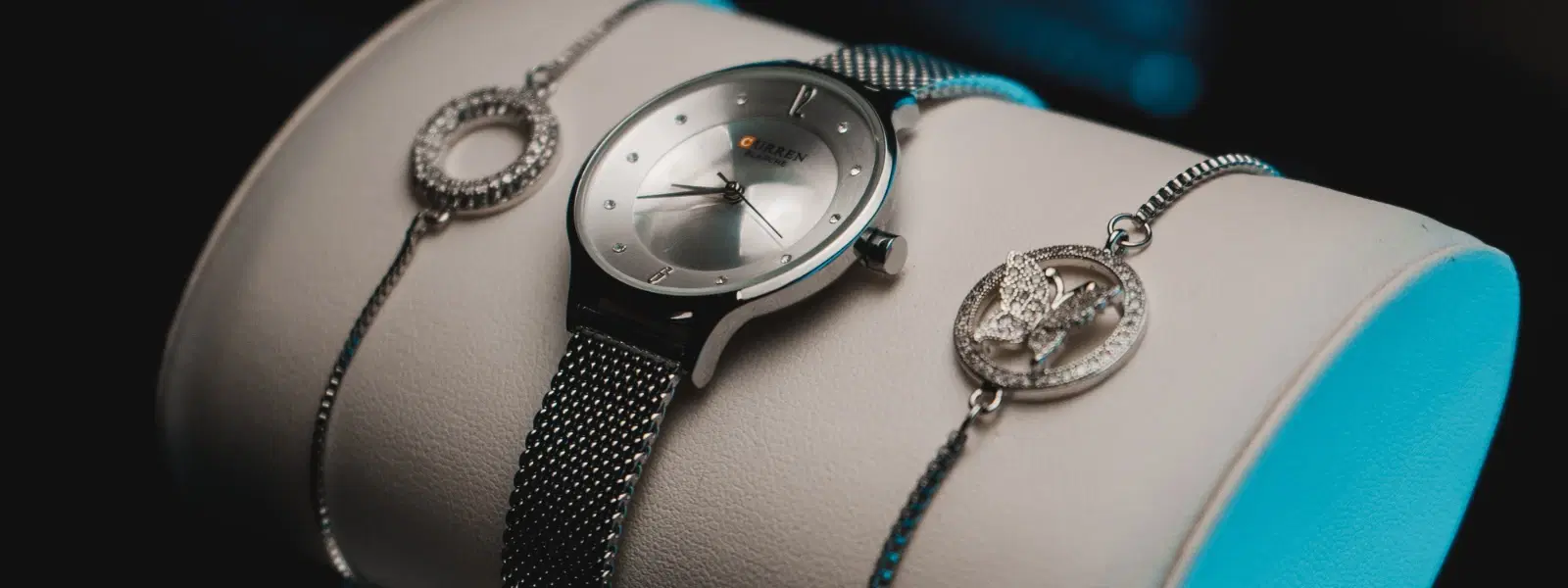
Luxury Edit
•03 min read

Luxury watches are more than just timekeeping devices—they are expressions of style, identity, and innovation. When choosing between sapphire glass and mineral glass, the decision goes beyond function, as each material carries its own charm and technical superiority. This checklist is designed to help you navigate the features of these premium watch materials, offering insights into their durability, clarity, cost, and overall appeal so you can make an informed, confident choice.
Sapphire glass, often referred to as sapphire crystal, is a synthetic material derived from crystallized aluminum oxide. This high-end material is celebrated for its exceptional scratch resistance and optical clarity, which makes it a favorite among premium watch collectors. The benefits of sapphire glass are evident in its striking appearance and its ability to maintain a pristine look even with daily wear.
Extreme scratch resistance, scoring high on the Mohs scale of hardness.
Unmatched clarity that allows intricate details to stand out.
A luxurious, polished finish that echoes premium craftsmanship.
Mineral glass is a tempered silica-based material that is designed with impact resistance in mind. While it may not offer the same level of scratch resistance as sapphire glass, mineral glass is appreciated for its affordability and durability. It is well suited for watches that need to withstand more active lifestyles without compromising on style.
Enhanced impact resistance for everyday protection.
More budget-friendly without sacrificing quality.
Lightweight and versatile for varied design aesthetics.
Sapphire glass is renowned for its exceptional durability, particularly due to its superior scratch resistance. Its strength makes it ideal for those who seek a watch that remains unblemished despite daily use. The inherent properties of sapphire crystal provide excellent protection against scratches, ensuring that your timepiece retains its luxurious appeal even after years of wear.

Although mineral glass does not quite match the scratch resistance of sapphire, it excels in impact resistance. This balance makes mineral glass an excellent choice for watches that are exposed to risks such as accidental drops or knocks. It is a practical alternative for those who prefer a blend of durability and cost-effectiveness, delivering reliable performance without breaking the bank.
Pro Tip: The Mohs scale is a handy tool for gauging durability. Sapphire glass scores an impressive 9, while mineral glass generally ranks between 5 and 6, guiding you in your decision-making process.
The optical clarity of sapphire glass is one of its major selling points in the luxury watch space. It provides a distortion-free viewing experience that enhances the intricate details and craftsmanship on the watch dial. This feature underscores how sapphire glass is synonymous with refined elegance and a premium look, making it a standout option for enthusiasts who value immaculate visual appeal.
Mineral glass also offers a decent level of transparency, although it may not quite match the brilliance of sapphire. Recent technological improvements, including advanced anti-reflective coatings, have significantly boosted its clarity. This makes mineral glass a compelling choice for those seeking a stylish watch with cost-saving benefits, without a significant compromise on aesthetics.
Sapphire glass is recognized for its premium appeal and comes with a higher price tag, reflecting the intricate manufacturing process and high-quality properties. Its superior durability and clarity make it a coveted feature in luxury watches, aligning well with the tastes of connoisseurs who are willing to invest in long-lasting beauty.
On the other hand, mineral glass provides a more affordable option without sacrificing essential features. For those who desire a blend of style and practicality, mineral glass stands out by delivering robust impact resistance at a lower cost. It is a popular choice for entry-level luxury watches, offering both value and performance.
-8704a161-e35d-4932-b982-017add6889b1.png&w=3840&q=75)
Insight Corner: Did You Know? Sapphire-coated mineral glass is an innovative hybrid option. It cleverly combines the affordability of mineral glass with the scratch resistance of sapphire, offering a balanced solution for buyers who seek both durability and value.
Durability Needs:
Choose sapphire glass if scratch resistance is essential. Opt for mineral glass if superior impact resistance better suits your lifestyle.
Budget Considerations:
Sapphire glass is ideal for those investing in high-end luxury watches, while mineral glass is great for keeping costs in check without sacrificing functionality.
Aesthetic Preferences:
Sapphire glass boasts unmatched clarity and a polished look. Mineral glass offers satisfactory transparency with notable cost benefits.
Lifestyle Factors:
For formal or professional environments, sapphire glass is a stellar match. For active or casual settings, mineral glass stands as a practical alternative.
It depends on your priorities. Sapphire glass excels in scratch resistance and clarity, while mineral glass shines in impact resistance and affordability.
Sapphire glass is generally more expensive and can be less impact-resistant, making it more prone to shattering under extreme conditions.
Look for signs of scratches and evaluate the clarity. Sapphire glass is very resistant to scratches and offers superior transparency compared to mineral glass.
Both sapphire glass and mineral glass offer distinct benefits for luxury watches. Sapphire glass is synonymous with premium durability and optical brilliance, making it a perfect fit for those who value pristine aesthetics. Meanwhile, mineral glass provides reliable protection with a more accessible price point, suited for a dynamic, everyday lifestyle. This checklist equips you with the necessary insights to choose the ideal glass type that aligns with your lifestyle, budget, and style aspirations, ensuring that your next luxury watch is as enduring as it is elegant.